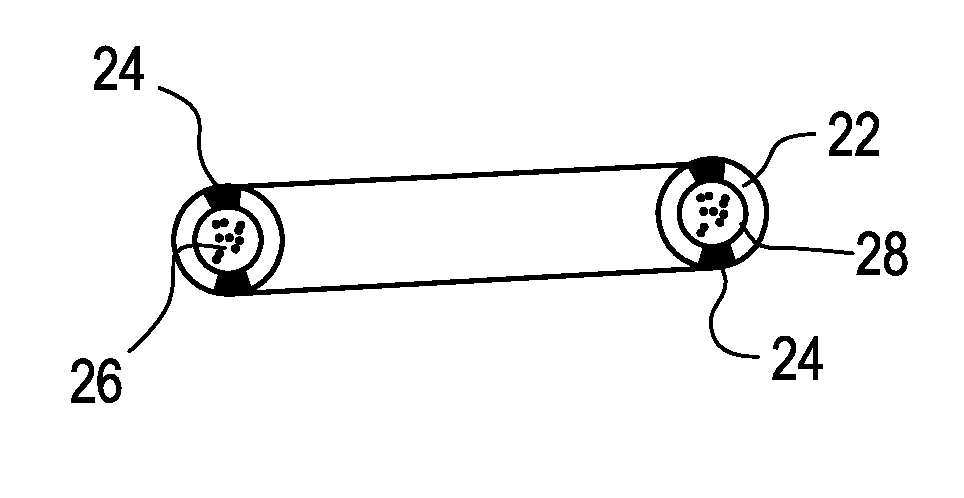Method for Intravesical Drug Delivery
a drug delivery and device technology, applied in the direction of biocide, heterocyclic compound active ingredients, catheter, etc., can solve the problems of reducing the quantity of drugs to reach the desired site, pain in the implantation procedure, and significant shortcomings of conventional methods and devices for delivering drugs, so as to facilitate the retention of devices and facilitate the grasping and removal of devices, the effect of facilitating the retention of devices
- Summary
- Abstract
- Description
- Claims
- Application Information
AI Technical Summary
Problems solved by technology
Method used
Image
Examples
example 1
Casting of a Solid Drug Rod
[0102]A solid rod of drug formulation was made for use in loading an intravesical drug delivery vehicle. The process steps used in making the rod are illustrated in FIG. 9. Silicone tubing was placed on an elastomer block and one end of the tubing was immersed in a vial containing an aqueous solution of 25 weight % Chondroitin Sulfate C (CS-C). A cylinder bar was rolled along the length of the silicone tubing to induce peristaltic motion of the tubing, thereby filling the tubing with the concentrated drug solution. See FIG. 10. The drug solution in the tubing was allowed to dry overnight at room temperature until all water was evaporated, leaving a cast solid rod. The solid rod was extracted from the tubing using tweezers and was approximately 17% by volume of the original solution.
example 2
Release of Polysaccharide from Device with 300 Micron Aperture
[0103]An implantable drug delivery device was prepared using silicone tubing having an inner diameter of 305 μm, outer diameter of 635 μm, wall thickness of 165 μm, and a length of 0.3 cm. A release orifice was drilled into the silicone tubing using laser ablation to produce an opening having a diameter of approximately 300 microns. A 316 μg solid rod of chondroitin sulfate C (CS-C), prepared as described in Example 1, was inserted into the silicone tubing and the tubing was plugged at both ends. The tubing was anchored and submerged in deionized water. Aliquots were collected and analyzed by a colorimetric assay using 1,9-dimethyl methylene blue (DMMB) to determine the concentration of CS-C released into the deionized water. FIG. 11 shows the percent of total drug released over 25 hours.
example 3
Release of Polysaccharide from Device with 50 Micron Aperture
[0104]The test described in Example 2 was repeated using a device having a 2 cm length, a 50 micron aperture, and a total drug load of 1.97 mg of CS-C. FIG. 12 shows the percent of total drug released over 90 hours.
PUM
| Property | Measurement | Unit |
|---|---|---|
| size | aaaaa | aaaaa |
| outer diameter | aaaaa | aaaaa |
| diameter | aaaaa | aaaaa |
Abstract
Description
Claims
Application Information
 Login to View More
Login to View More - R&D
- Intellectual Property
- Life Sciences
- Materials
- Tech Scout
- Unparalleled Data Quality
- Higher Quality Content
- 60% Fewer Hallucinations
Browse by: Latest US Patents, China's latest patents, Technical Efficacy Thesaurus, Application Domain, Technology Topic, Popular Technical Reports.
© 2025 PatSnap. All rights reserved.Legal|Privacy policy|Modern Slavery Act Transparency Statement|Sitemap|About US| Contact US: help@patsnap.com



